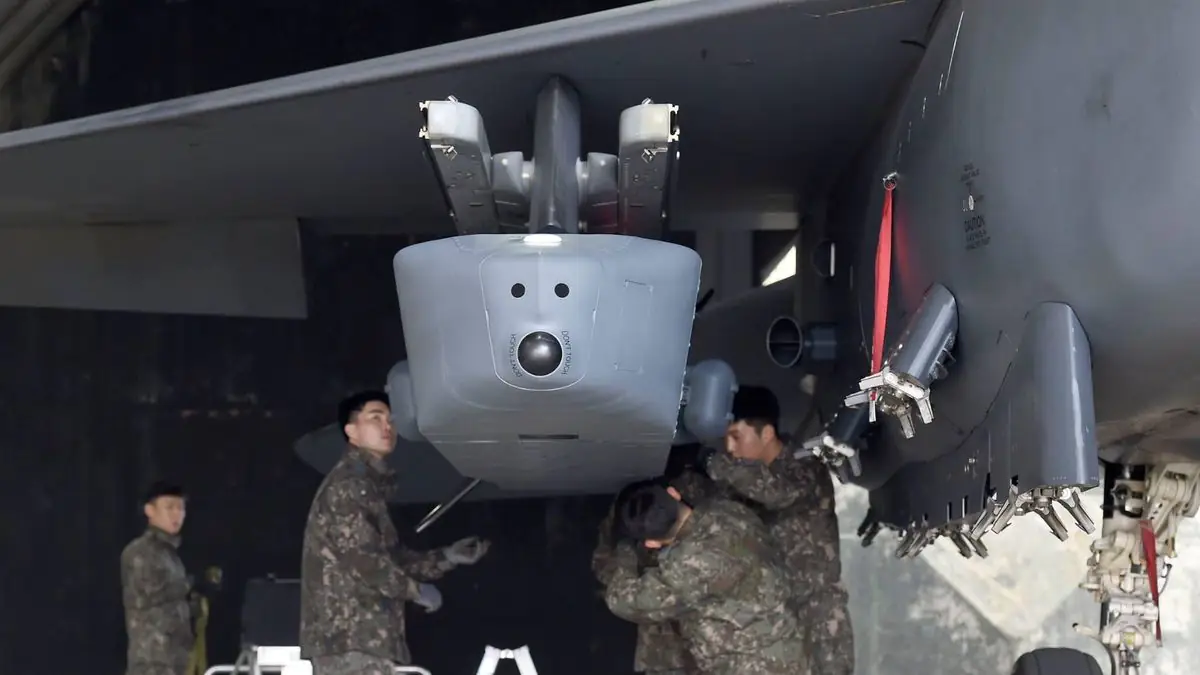
South Korean F-15K Slam Eagle fighters recently conducted drills using Taurus KEPD 350K air-launched cruise missiles. This rare event was part of dual-purpose exercises, where the missile simultaneously struck a ground target 400 km away and simulated a North Korean cruise missile in an anti-missile defense scenario.
In the second phase of the drills, South Korean Air Force E-737 Peace Eye AEW&C early warning and control aircraft, along with F-35A and KF-16 fighters, were deployed to track and intercept the KEPD 350K missile. The interception was simulated after the missile was supposedly detected by air defense systems.
Exercises involving F-15K fighters and the Taurus missile are quite rare. A video of the drills has surfaced online, showing part of the strike sequence where the missile hits a target marked with a cross in an almost vertical dive. The segment of the exercise simulating enemy cruise missiles, involving F-35A, KF-16, and E-737 aircraft, is not immediately visible in the footage.
The Slam Eagles are the backbone of the Air Force’s multirole missions. Their name comes from their compatibility with AGM-84 SLAM-ER cruise missiles, but the F-15K can also carry GBU-24 Paveway III laser-guided bombs. The Taurus KEPD 350 was added to the arsenal in November 2016, when Taurus Systems GmbH delivered the first batch of missiles to South Korea. The KEPD 350 features folding wings that deploy upon launch, X-shaped tail fins for stabilization, and side air intakes. It has a range of 500 km, reaches nearly Mach 1, and is equipped with a tandem concrete-penetrating warhead, MEPHISTO, weighing 481 kg.
The combination of the F-15K and the Taurus KEPD 350 is vital for striking strategic ground targets, such as command and control centers, logistics hubs, and combat operation headquarters, often located deep behind enemy lines, possibly in underground bunkers or mountains. The Slam Eagle can also carry air-to-air munitions for maneuvering tasks: the AIM-120 AMRAAM and AIM-9 Sidewinder allow it to engage in combat both beyond visual range (BVR) and within visual range (WVR), respectively.
“The Taurus missile, launched from an F-15K fighter, flew approximately 400 kilometers and accurately hit a target set up at a range in the West Sea,” the report states.
According to the Air Force, these drills tested the operational capabilities of the missile, including system integration, safe separation from the F-15K, and “confirmed its formidable power for deterring North Korea.” Although the video shows the use of an inert missile, there was a powerful explosion when the KEPD 350 hit the target. This may have been caused by the engine and internal fuel.
The exercises also rehearsed “procedures for responding to enemy cruise missiles,” according to the video description. “The Taurus missile, launched from an F-15K fighter, simulated an enemy cruise missile flying at high speed at a low altitude.”
The Air Force scrambled an E-737 AEW&C aircraft “after detecting signs of an enemy cruise missile launch.” It “identified an unknown target flying at high speed and low altitude over the West Sea” and relayed the information to F-35A and KF-16 fighters, as well as to the Main Command Center. The West Coast missile defense unit tracked the missile’s route, while the F-35A and KF-16 fighters conducted visual identification. Then, “the F-35A successfully shot down the enemy cruise missile in a simulated manner,” meaning the pilot simulated engaging the cruise missile with onboard weaponry.
Source: theaviationist